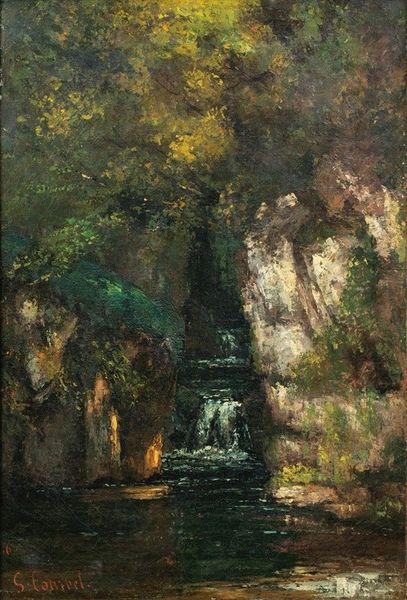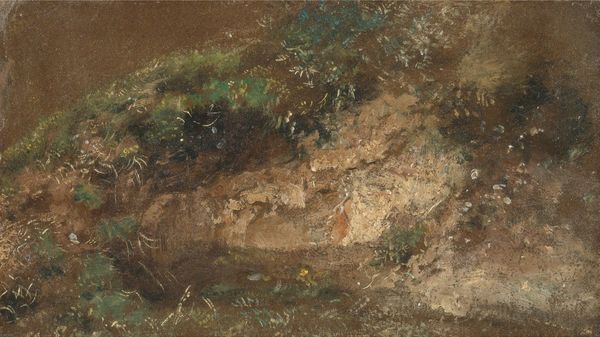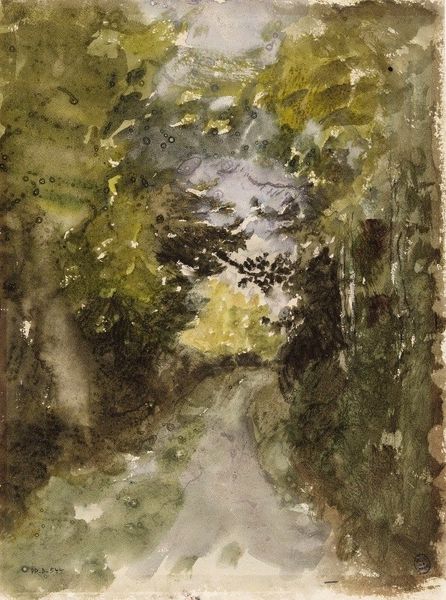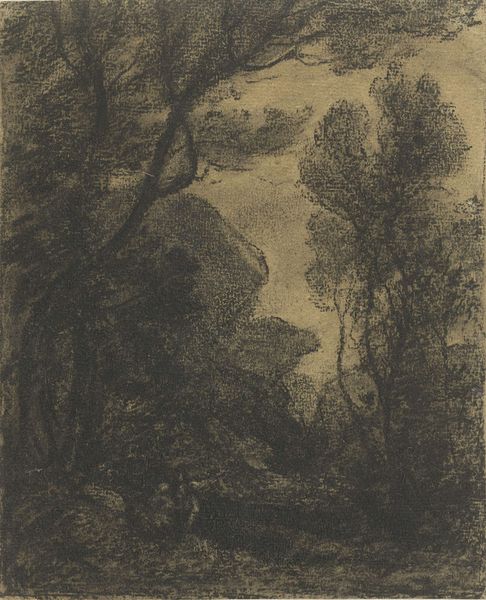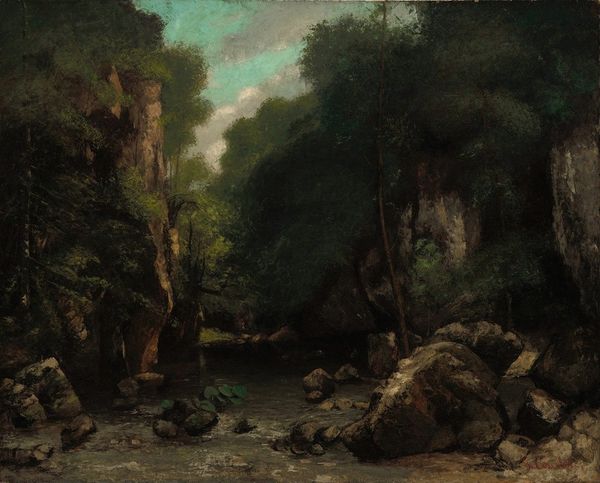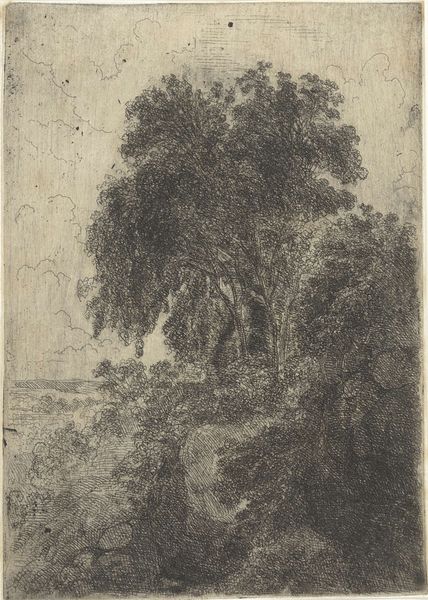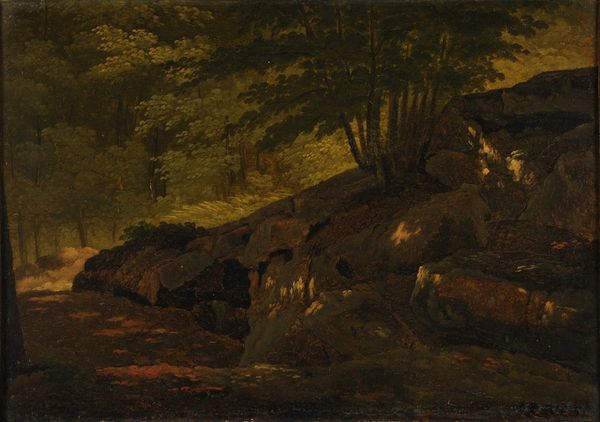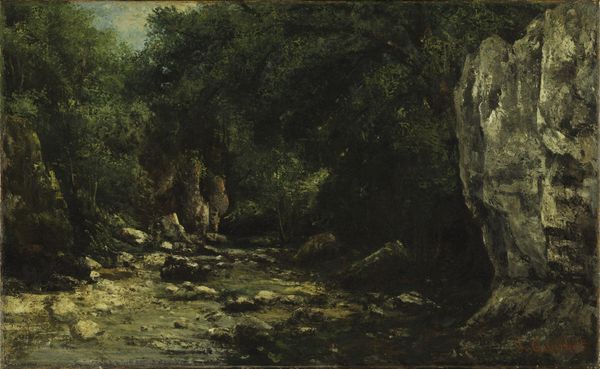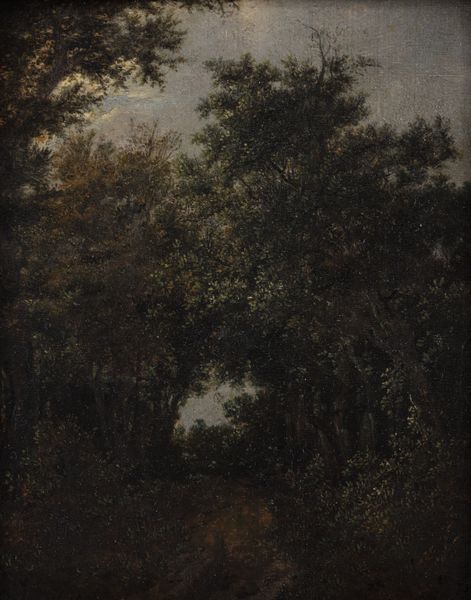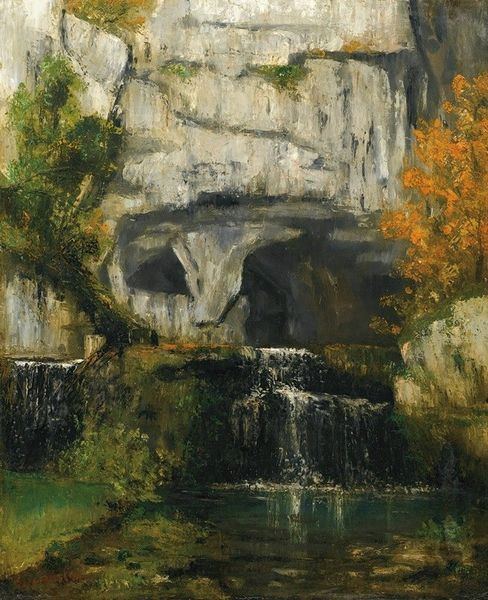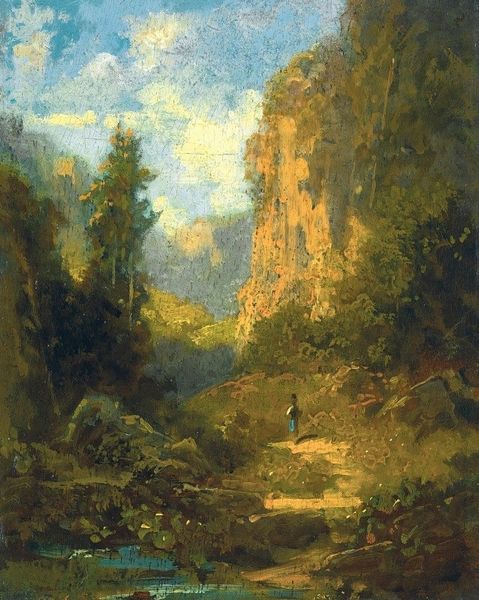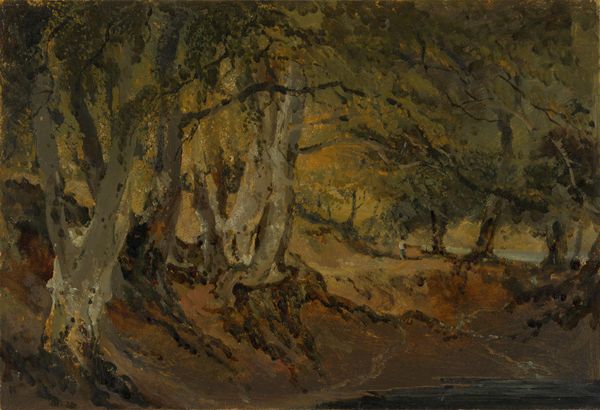
Dimensions: 35 x 27 cm
Copyright: Public domain
Curator: Here we have Gustave Courbet's "Waterfall in the Wood," an oil painting dating from 1863. Editor: It’s brooding, isn't it? Dark greens and browns, a cascade barely visible in the gloom. Gives off a feeling of hidden power. Curator: Absolutely. Courbet was working at a time when the concept of the sublime in nature was really taking hold. Remember that these kinds of wild landscapes were becoming popular among urban dwellers, but the feeling of intimidation was not always unwelcome. The Romantics explored dark emotional undercurrents within the seemingly serene forest scenes. Editor: It seems very of its moment, with its somber romanticism and emerging realism. I wonder what Courbet thought of his audience's expectations. Did he grapple with that dichotomy? How do you feel the waterfall itself functions as a symbol here? Curator: Waterfalls, traditionally, represent both the awesome power and destructive potential of nature. But notice that while we can make out individual forms—rocks, trees, foliage—the whole scene is rendered with thick, almost aggressive brushstrokes. He evokes a sense of raw, untamed nature. Editor: Do you think the heavy brushwork detracts from any deeper symbolic reading, drawing the viewer’s focus towards the technique? The lack of clarity is remarkable for an artist associated with Realism. I’d have thought he’d emphasize a documentary depiction, but it seems quite evocative, as if depicting an emotional experience. Curator: I think Courbet plays with the boundary of the Realist label. He wasn't just about photographic accuracy, but about capturing the physical experience, the very texture of the world. And consider the cultural context; perhaps this raw style mirrors social upheaval. It seems he uses natural spaces to convey the anxieties brewing beneath the surface of society at that moment in French history. Editor: So it’s less about reflecting reality, and more about refracting an emotional and intellectual response through it. Curator: Precisely. It shows us the depth of feeling, in ways that smooth, polished academic landscapes never could. Editor: I suppose my initial impression wasn’t wrong. I do find this scene fascinating in its somber mood and shadowy presence. Curator: For me, it resonates even more knowing something about its context—it is, ultimately, an expression of the human experience through nature, unrest and all.
Comments
No comments
Be the first to comment and join the conversation on the ultimate creative platform.
